Rice Lake, Wisconsin | |
|---|---|
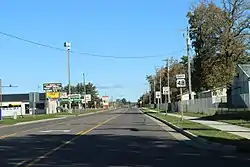 Looking north in Rice Lake on WIS 48 | |
 Seal | |
| Motto: You'll love our friendly nature | |
 Location of Rice Lake in Barron County, Wisconsin | |
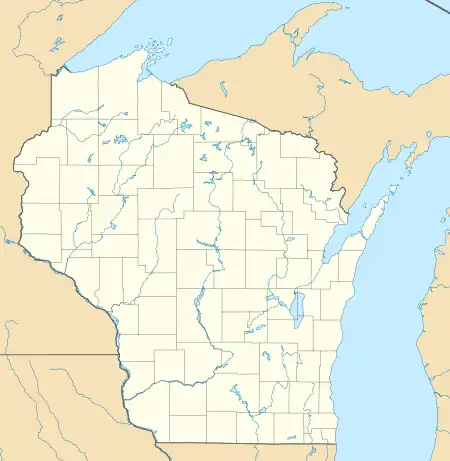 Rice Lake Location within Wisconsin  Rice Lake Location within the United States 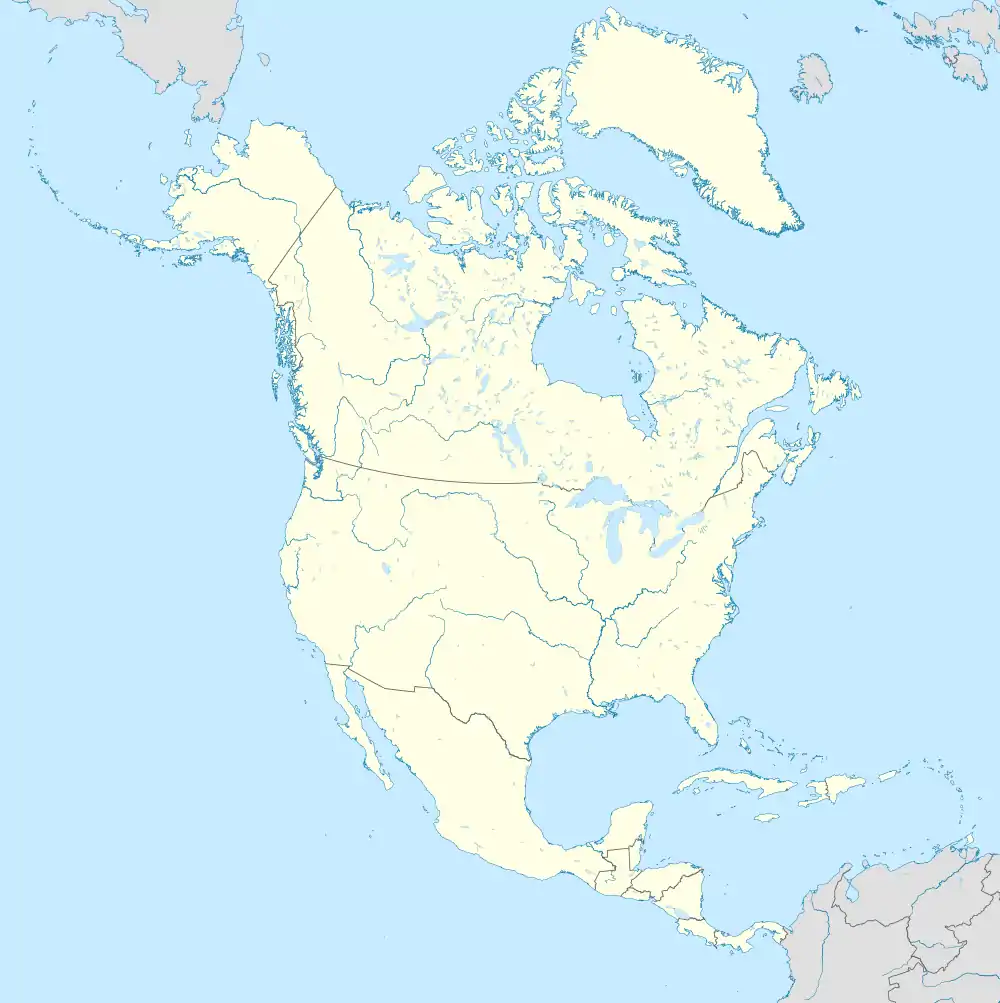 Rice Lake Rice Lake (North America) | |
| Coordinates: 45°29′54″N 91°44′20″W / 45.49833°N 91.73889°W | |
| Country | |
| State | |
| County | Barron |
| Incorporated | April 1, 1887 |
| Government | |
| • Mayor | Justin Fonfara
|
| Area | |
| • Total | 9.75 sq mi (25.25 km2) |
| • Land | 8.64 sq mi (22.37 km2) |
| • Water | 1.11 sq mi (2.88 km2) |
| Elevation | 1,135 ft (346 m) |
| Population | |
| • Total | 9,040 |
| • Density | 930/sq mi (360/km2) |
| Time zone | UTC-6 (Central) |
| • Summer (DST) | UTC-5 (CDT) |
| ZIP Code | 54868 |
| Area code(s) | 715 & 534 |
| FIPS code | 55-67350[4] |
| GNIS feature ID | 1584019[2] |
| Website | www.ci.rice-lake.wi.us |
Rice Lake is a city in Barron County in northwest Wisconsin, United States, on the shore of the lake with the same name. The city is a commercial and tourist center for the surrounding rural areas.[5] As of the 2020 census, the city had a total population of 9,040. The city is located mostly within the Town of Rice Lake.
History
.JPG.webp)
American Indians lived around Rice Lake for millennia, some of whom made mounds like those that remain in Indian Mounds Park along the shore of the lake.[6] In later years before white settlers, Chippewa people occupied the area, and they had a strong cultural attachment to the wild rice that grew on the lake.[7]
In the mid-1860s Knapp, Stout & Co., the growing lumber company downstream at Menomonie, bought tracts of forest around Rice Lake.[5][8] Around 1868 the company started a logging camp in the area[9] and in 1870 the company dammed the Red Cedar to raise the level of Rice Lake to make a better holding pond for their logs. The higher water disrupted the existing wild rice beds, angering the Chippewa. As compensation, Knapp-Stout gave them food, but it was settlers' food like pork and flour - not wild rice.[5]
Knapp-Stout platted the village in 1870, naming it for the lake, and naming many streets after officers of the company, including Knapp, Stout, Tainter and Wilson. The company built a small water-powered sawmill for sawing local lumber and a gristmill. Permanent settlers began arriving about that time. The first houses were built around 1874. Saloons and hotels followed.[9] Rice Lake's first school opened in a Knapp-Stout building in 1874. Regular mail service began that year, with the mail arriving by stage from Menomonie and Chippewa Falls, initially once a week. The first newspaper, the Chronotype, started the same year.[10]
Many employees of the early Knapp-Stout were Norwegian and in 1875 a Norwegian Lutheran congregation was organized. A local brewery was also started in 1875. Episcopalian families began worshiping intermittently in 1879. Roman Catholics began meeting the following year, building a church the same year - the first brick building in the village. Knapp-Stout added a flour mill in 1879. A Methodist Episcopal congregation also formed in 1880, and a Presbyterian congregation in 1882.[9]
In 1882 the first railroad reached Rice Lake - the Chippewa Falls and Northern Railroad,[9] and the four-year high school was started.[10] The following year the first bank opened - the Barron County Bank. A barrel factory opened in 1885, employing 40 men, and a hub and spoke factory in 1886, employing 50 in summer and 125 during logging season. In 1887 the Rice Lake Lumber Company opened, owned by Orrin Henry Ingram of Eau Claire. It expanded Knapp-Stout's sawmill, added two planing mills, and employed 200.[9]
Rice Lake incorporated as a city in 1887. A volunteer fire department was formed in 1889, which was equipped with a hook and ladder wagon, a hand hose cart, and 1,300 feet of hose. The city's population was 2,130 in the 1890 census.[9] A city library opened in 1897. The lumber companies set up electric lights and a water utility in 1892, which were taken over by the city in 1910.[10]
In 1907 the Barron County Normal School opened. In 1938 WJMC, the area's first radio station, began broadcasting. In 1940 the forerunner of Indianhead Tech College was established. In 1966 UW-Stout opened a branch campus in Barron County, which has since developed into UW-Eau Claire - Barron County.[10]
Geography
Rice Lake is located at 45°29′54″N 91°44′20″W / 45.49833°N 91.73889°W (45.498408, -91.738844).[11]
According to the United States Census Bureau, the city has a total area of 9.70 square miles (25.12 km2), of which, 8.60 square miles (22.27 km2) is land and 1.10 square miles (2.85 km2) is water.[12]
Rice Lake is along the Red Cedar River.
Climate
| Climate data for Rice Lake, Wisconsin, 1991–2020 normals, extremes 1982–2022 | |||||||||||||
|---|---|---|---|---|---|---|---|---|---|---|---|---|---|
| Month | Jan | Feb | Mar | Apr | May | Jun | Jul | Aug | Sep | Oct | Nov | Dec | Year |
| Record high °F (°C) | 50 (10) |
56 (13) |
80 (27) |
88 (31) |
94 (34) |
98 (37) |
100 (38) |
101 (38) |
92 (33) |
85 (29) |
73 (23) |
60 (16) |
101 (38) |
| Mean maximum °F (°C) | 39.2 (4.0) |
45.4 (7.4) |
60.6 (15.9) |
75.9 (24.4) |
84.8 (29.3) |
89.6 (32.0) |
90.8 (32.7) |
90.0 (32.2) |
85.7 (29.8) |
76.6 (24.8) |
59.6 (15.3) |
43.9 (6.6) |
93.1 (33.9) |
| Mean daily maximum °F (°C) | 21.6 (−5.8) |
27.2 (−2.7) |
39.6 (4.2) |
54.3 (12.4) |
67.8 (19.9) |
77.3 (25.2) |
81.4 (27.4) |
79.5 (26.4) |
71.4 (21.9) |
56.8 (13.8) |
40.4 (4.7) |
27.1 (−2.7) |
53.7 (12.1) |
| Daily mean °F (°C) | 11.6 (−11.3) |
16.0 (−8.9) |
28.9 (−1.7) |
43.0 (6.1) |
56.2 (13.4) |
66.0 (18.9) |
70.1 (21.2) |
67.9 (19.9) |
59.6 (15.3) |
46.1 (7.8) |
31.7 (−0.2) |
18.5 (−7.5) |
43.0 (6.1) |
| Mean daily minimum °F (°C) | 1.7 (−16.8) |
4.8 (−15.1) |
18.1 (−7.7) |
31.6 (−0.2) |
44.7 (7.1) |
54.7 (12.6) |
58.8 (14.9) |
56.3 (13.5) |
47.8 (8.8) |
35.3 (1.8) |
22.9 (−5.1) |
10.0 (−12.2) |
32.2 (0.1) |
| Mean minimum °F (°C) | −21.4 (−29.7) |
−17.7 (−27.6) |
−6.1 (−21.2) |
16.5 (−8.6) |
29.9 (−1.2) |
40.1 (4.5) |
48.1 (8.9) |
45.1 (7.3) |
33.0 (0.6) |
21.4 (−5.9) |
5.5 (−14.7) |
−14.2 (−25.7) |
−23.9 (−31.1) |
| Record low °F (°C) | −38 (−39) |
−37 (−38) |
−26 (−32) |
−2 (−19) |
20 (−7) |
32 (0) |
41 (5) |
34 (1) |
26 (−3) |
11 (−12) |
−17 (−27) |
−40 (−40) |
−40 (−40) |
| Average precipitation inches (mm) | 0.89 (23) |
0.82 (21) |
1.47 (37) |
2.77 (70) |
3.85 (98) |
4.17 (106) |
3.98 (101) |
4.21 (107) |
3.34 (85) |
3.03 (77) |
1.68 (43) |
1.22 (31) |
31.43 (799) |
| Average snowfall inches (cm) | 10.5 (27) |
10.7 (27) |
8.9 (23) |
3.5 (8.9) |
0.5 (1.3) |
0.0 (0.0) |
0.0 (0.0) |
0.0 (0.0) |
0.0 (0.0) |
0.8 (2.0) |
5.7 (14) |
11.9 (30) |
52.5 (133.2) |
| Average precipitation days (≥ 0.01 in) | 7.6 | 5.9 | 7.1 | 10.1 | 12.0 | 12.4 | 10.7 | 10.5 | 10.5 | 9.8 | 7.0 | 7.7 | 111.3 |
| Average snowy days (≥ 0.1 in) | 6.8 | 5.4 | 3.5 | 1.6 | 0.1 | 0.0 | 0.0 | 0.0 | 0.0 | 0.4 | 2.8 | 6.4 | 27.0 |
| Source 1: NOAA[13] | |||||||||||||
| Source 2: National Weather Service[14] | |||||||||||||
Demographics
| Census | Pop. | Note | %± |
|---|---|---|---|
| 1880 | 362 | — | |
| 1890 | 2,130 | 488.4% | |
| 1900 | 3,002 | 40.9% | |
| 1910 | 3,968 | 32.2% | |
| 1920 | 4,457 | 12.3% | |
| 1930 | 5,177 | 16.2% | |
| 1940 | 5,719 | 10.5% | |
| 1950 | 6,898 | 20.6% | |
| 1960 | 7,303 | 5.9% | |
| 1970 | 7,278 | −0.3% | |
| 1980 | 7,691 | 5.7% | |
| 1990 | 7,998 | 4.0% | |
| 2000 | 8,320 | 4.0% | |
| 2010 | 8,438 | 1.4% | |
| 2019 (est.) | 8,509 | [15] | 0.8% |
| U.S. Decennial Census[16] | |||
As of 2000, the median income for a household in the city was $34,637, and the median income for a family was $53,056. Males had a median income of $40,450 versus $30,211 for females. The per capita income for the city was $22,354. About 6.9% of families and 13.3% of the population were below the poverty line, including 13.4% of those under age 18 and 13.1% of those age 65 or over.
2010 census
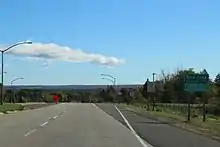
As of the census[3] of 2010, there were 8,438 people, 3,936 households, and 2,065 families residing in the city. The population density was 981.2 inhabitants per square mile (378.8/km2). There were 4,239 housing units at an average density of 492.9 per square mile (190.3/km2). The racial makeup of the city was 96.2% White, 0.3% African American, 0.9% Native American, 0.8% Asian, 0.5% from other races, and 1.3% from two or more races. Hispanic or Latino people of any race were 2.4% of the population.
There were 3,936 households, of which 24.3% had children under the age of 18 living with them, 37.6% were married couples living together, 10.9% had a female householder with no husband present, 4.0% had a male householder with no wife present, and 47.5% were non-families. 39.3% of all households were made up of individuals, and 17.6% had someone living alone who was 65 years of age or older. The average household size was 2.09 and the average family size was 2.79.
The median age in the city was 41.2 years. 20.6% of residents were under the age of 18; 10.1% were between the ages of 18 and 24; 23.5% were from 25 to 44; 24.5% were from 45 to 64; and 21.2% were 65 years of age or older. The gender makeup of the city was 46.8% male and 53.2% female.
Infrastructure
U.S. Highway 53, Wisconsin Highway 48, County Road SS (Main Street), and County Road O (South Access Road) are the main routes in the city.
The area is served by Rice Lake Regional Airport - Carl's Field (KRPD), which is located south of Rice Lake.
Rice Lake formerly had passenger rail service at the Rice Lake station. The town spends 325,000 USD annually on infrastructure.
Education
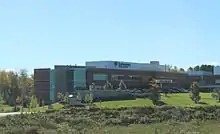
Public schools
Rice Lake Area School District operates public schools:
- Rice Lake High School
- Northern Lakes Regional Academy
- Rice Lake Middle School
- Haugen Elementary
- Hilltop Elementary
- Tainter Elementary
Private schools
- Redeemer Lutheran School
- St. Joseph School
Post-secondary education
- University of Wisconsin–Barron County
- Northwood Technical College (formerly Wisconsin Indianhead Technical College) - Rice Lake Campus
Economy
Rice Lake serves as a shopping, industrial, educational, and medical hub for the surrounding rural communities of Barron, Cameron, Chetek, Shell Lake, Cumberland, Spooner, and Ladysmith. The city budget annually is 915,000 USD . The largest source of revenue for the city is property taxes with 430,000 dollars of income and the largest expenditure of the city is infrastructure with the town budget for infrastructure of 325,000 dollars in 2022.
Notable people
- Kenny Bednarek - sprinter
- John G. Blystone - film director
- Edward R. Brunner - justice of Wisconsin Court of Appeals
- Howard W. Cameron - Wisconsin State Senator
- William M. Conley - federal judge
- William Henry Dietz - college and NFL head coach
- Henry Ellenson - professional basketball player for the New York Knicks[17]
- Foster Friess - businessman
- Eric G. Gibson - Medal of Honor recipient[18]
- Hal Kolstad - MLB player
- Isaac J. Kvam - Wisconsin State Representative
- Dick Lane - announcer, film and television actor
- James P. Leary- folklorist
- Warren D. Leary - Wisconsin State Representative
- Michael A. Lehman - Wisconsin State Representative
- Pug Lund - football player
- Harold Olsen - head coach of Ohio State, Northwestern and NBA's Chicago Stags, member of Naismith Memorial Basketball Hall of Fame
- Clay Perry - MLB player
- Jason Rae - Secretary of Democratic National Committee
- Kapp Rasmussen - Wisconsin State Representative and lawyer
- Fred Thomas - MLB player
- John W. Vaudreuil - U.S. Attorney
Sister cities
Rice Lake has two sister cities:[19]
Local media
- WAQE (AM) 1090, Talk & Sports
- WAQE-FM 97.7, All the Stars, All the Time
- WJMC (AM) 1240, Good Friends and Great Information
- WJMC-FM 96.1, The Best Country Station, Number One
- WKFX FM 99.1, Classic Hits
- WWJP-LP FM 101.7, 3ABN Radio, Christian
- WYRL-LP FM 105.5, Eclectic Music, Local Government Discussion
References
- ↑ "2019 U.S. Gazetteer Files". United States Census Bureau. Retrieved August 7, 2020.
- 1 2 U.S. Geological Survey Geographic Names Information System: Rice Lake, Wisconsin
- 1 2 "U.S. Census website". United States Census Bureau. Retrieved November 18, 2012.
- ↑ "U.S. Census website". United States Census Bureau. Retrieved January 31, 2008.
- 1 2 3 "Rice Lake, Wisconsin - A Brief History". Wisconsin Historical Society. Retrieved August 25, 2023.
- ↑ Birmingham, Robert A.; Leslie E. Eisenberg (2000). Indian Mounds of Wisconsin. Madison, WI: University of Wisconsin Press. p. 193. ISBN 9780299168742.
- ↑ Dell'Orto, Giovanna (September 30, 2022). "Minnesota Ojibwe harvest sacred, climate-imperiled wild rice". Associated Press. Retrieved August 24, 2023.
- ↑ "Logging and Lumbering in the Rice Lake Area - A Chronology". National Lumbering Hall of Fame. Retrieved August 25, 2023.
- 1 2 3 4 5 6 Forrester, George (1891). Historical and Biographical Album of the Chippewa Valley Wisconsin. Chicago, Ill.: A. Warner. pp. 341–347. Retrieved August 25, 2023.
- 1 2 3 4 "History". Rice Lake Chamber of Commerce. Retrieved August 25, 2023.
- ↑ "US Gazetteer files: 2010, 2000, and 1990". United States Census Bureau. February 12, 2011. Retrieved April 23, 2011.
- ↑ "US Gazetteer files 2010". United States Census Bureau. Archived from the original on January 25, 2012. Retrieved November 18, 2012.
- ↑ "U.S. Climate Normals Quick Access – Station: Rice Lake, WI". National Oceanic and Atmospheric Administration. Retrieved March 5, 2023.
- ↑ "NOAA Online Weather Data – NWS Minneapolis". National Weather Service. Retrieved March 5, 2023.
- ↑ "Population and Housing Unit Estimates". United States Census Bureau. May 24, 2020. Retrieved May 27, 2020.
- ↑ "Census of Population and Housing". Census.gov. Retrieved June 4, 2015.
- ↑ "Knicks Are Taking a Flyer on Another 1st-Round 'Bust'". February 28, 2019.
- ↑ "Military Sealift Command - Medal of Honor Recipient". Washington Navy Yard, DC: Military Sealift Command. Retrieved July 3, 2011.
- ↑ "Sister Cities Rice Lake and Žamberk mark quarter century of partnership". Rice Lake Chronotype. July 10, 2019. Retrieved September 6, 2020.
External links
- City of Rice Lake
- Rice Lake Chamber of Commerce
- Sanborn fire insurance maps: 1893 1899 1917
